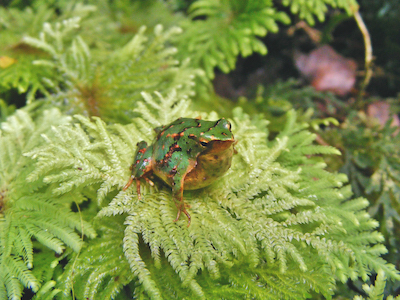At 190 years old, Jonathan the Seychelles giant tortoise recently made news for being the “oldest living land animal in the world.” Although anecdotal evidence like this exists that some species of turtles and other ectotherms—or “cold-blooded” animals—live a long time, evidence is spotty and mostly focused on animals living in zoos or a few individuals living in the wild. Now, an international team of 114 scientists, led by Northeastern Illinois University and Penn State, reports the most comprehensive study of aging and longevity to date comprising data collected in the wild from 107 populations of 77 species of reptiles and amphibians worldwide.
“Anecdotal evidence exists that some reptiles and amphibians age slowly and have long lifespans, but until now no one has actually studied this on a large scale across numerous species in the wild,” said David Miller, senior author and associate professor of wildlife population ecology at Penn State University. “If we can understand what allows some animals to age more slowly, we can better understand aging in humans, and we can also inform conservation strategies for reptiles and amphibians, many of which are threatened or endangered.”
The face of a tuatara (Sphenodon punctatus). Photo by Sarah Lamar.
Among their many findings, which they reported in the journal Science, the researchers documented for the first time that turtles, crocodilians and salamanders have particularly low aging rates and extended lifespans for their sizes. The team also found that protective phenotypes, such as the hard shells of most turtle species, contribute to slower aging, and in some cases even “negligible aging,” or lack of biological aging.
Northeastern Illinois University Assistant Professor of Biology Beth Reinke is the first author of the paper.
“These various protective mechanisms can reduce animals’ mortality rates because they’re not getting eaten by other animals,” Reinke said. “Thus, they’re more likely to live longer, and that exerts pressure to age more slowly. We found the biggest support for the protective phenotype hypothesis in turtles. Again, this demonstrates that turtles, as a group, are unique.”
In their study, the researchers applied comparative phylogenetic methods—which enable investigation of organisms’ evolution—to mark-recapture data—in which animals are captured, tagged, released back into the wild and observed. Their goal was to analyze variation in ectotherm aging and longevity in the wild compared to endotherms (warm-blooded animals) and explore previous hypotheses related to aging—including presence or absence of protective physical traits and mode of body temperature regulation.
The protective phenotypes hypothesis suggests that animals with physical or chemical traits that confer protection—such as armor, spines, shells or venom—have slower aging and greater longevity. The team documented that these protective traits do, indeed, enable animals to age more slowly and, in the case of physical protection, live much longer for their size than those without protective phenotypes.
“It could be that their altered morphology with hard shells provides protection and has contributed to the evolution of their life histories, including negligible aging—or lack of demographic aging—and exceptional longevity,” said Anne Bronikowski, co-senior author and professor of integrative biology at Michigan State University.
Miller explained that the “thermoregulatory mode hypothesis” suggests that ectotherms—because they require external temperatures to regulate their body temperatures and, therefore, often have lower metabolisms—age more slowly than endotherms, which internally generate their own heat and have higher metabolisms.
“People tend to think, for example, that mice age quickly because they have high metabolisms, whereas turtles age slowly because they have low metabolisms,” Miller said.
The team’s findings, however, reveal that ectotherms’ aging rates and life spans range both well above and below the known aging rates for similar-sized endotherms, suggesting that the way an animal regulates its temperature—cold-blooded versus warm-blooded—is not necessarily indicative of its aging rate or lifespan.

A photo of a brooding male Darwin’s frog (Rhinoderma darwinii). Photo by ONG Ranita de Darwin.
“We didn’t find support for the idea that a lower metabolic rate means ectotherms are aging slower,” Miller said. “That relationship was only true for turtles, which suggests that turtles are unique among ectotherms.”
Interestingly, the team observed negligible aging in at least one species in each of the ectotherm groups, including in frogs and toads, crocodilians and turtles.
“It sounds dramatic to say that they don’t age at all, but basically their likelihood of dying does not change with age once they’re past reproduction,” Reinke said.
Reinke noted that the team’s novel study was only possible because of the contributions of a large number of collaborators from across the world studying a wide variety of species.
“Being able to bring these authors together who have all done years and years of work studying their individual species is what made it possible for us to get these more reliable estimates of aging rate and longevity that are based on population data instead of just individual animals,” Reinke said.
The National Institutes of Health supported this research.
Top photo: A group of painted turtles (Chrysemys picta), a widespread North American species of freshwater turtle. Photo by Beth A. Reinke.







